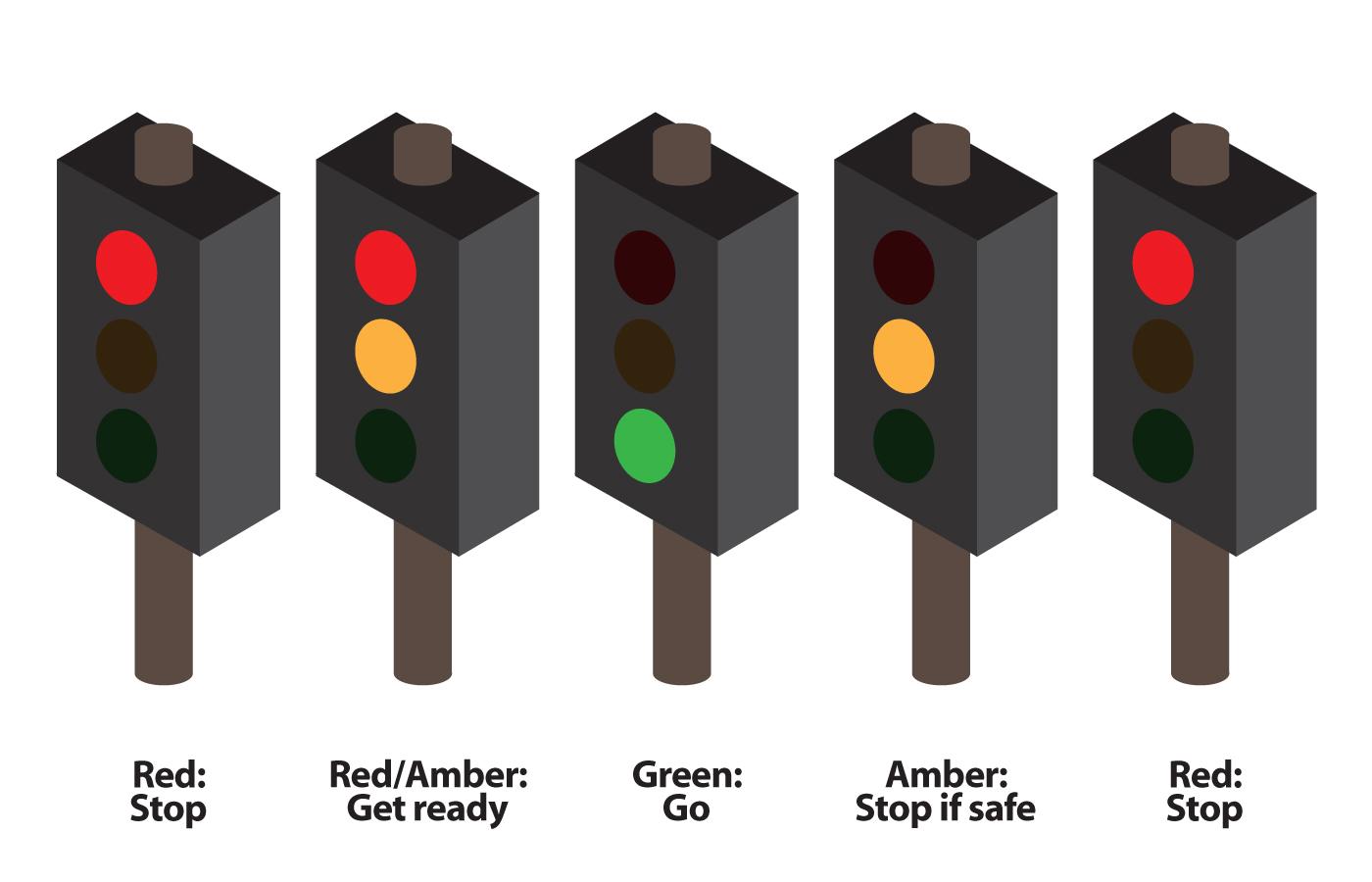Online driving tutorials
Now that you can 'drive' a car, it's important to know what everything around you means. Traffic lights and light controlled junctions will tell us if we need an approaching routine if the lights are green, or if red an emerging one.
Many type of lights
Some sets of lights appear to be confusing on approach. The more experience you gain, the less daunting they become. Once you get to the partly trained stage you will be required to handle and deal with these in a slightly different fashion.
Regular traffic light, pelican crossings, toucan crossings, puffin crossings... If you haven't done so already, this is a good time to pick up the highway code and start learning about this. Anything sooner than now and it's all a bit dry and difficult to visualise.
The moment you see them, check your mirrors to see how close the car behind is as you may have to reduce your speed. When approaching red lights, keep both hands on the wheel until you stop. Keep it simple. Taking hands off the wheel to adjust your gears unnecessarily leads to potentially putting the car into the incorrect gear.
Your hand may also apply the handbrake whilst the car is in motion resulting in an abrupt stop, damaging the car. Keep the car under your control with your feet. Stop, then apply the handbrake to secure it from rolling away. Try to wait in neutral to rest the car and your feet. It's a good place to practise getting the car ready quickly. Perhaps wait a little while before trying this.
You need to be able to display observational skills and general driving knowledge. Look to see what the other lanes of traffic are doing. You essentially need to be able to preempt the traffic lights. Look for tell-tale signs. The colour of the lights for the crossing traffic, are there any green men on the pedestrian crossing yellow boxes, are the lights making the crossing sounds. Try not to get the car ready until the last possible moment. The examiners do not want to see you constantly down on the clutch in first gear on the bite.
You must be able to show you understand how traffic lights work and that you are prepared to rest your legs and the car.
Observe. Some times the lights are red for what seems like an age. Look busy. You need to be taking in all of what is happening. Keep checking your mirrors. Cyclists could potentially come up from behind on either side.
The car needs to be prepared so when your lights turn green, you move away. You don't want to be setting gas and finding the bite as the lights turn green. You'll be slowing the flow of traffic behind you and the examiner will mark you down for not making progress. Remember, every colour except green means stop, only proceed when it turns green. Make sure you know the sequence, see diagram opposite.
Filter lights
When turning right at a crossroads/T-junction, and there is a filter light, you may proceed into the junction when the main light is green. Then you wait for a gap in the traffic or for the filter light to come on.
Some times the filter lights don't work or are activated with cameras and pressure pads in the junction. If you are sitting waiting for a filter during your exam and it doesn't come on, you could be failed for not making progress.
The Highway Code says "153: Green filter arrow. This indicates a filter lane only. Do not enter that lane unless you want to go in the direction of the arrow. You may proceed in the direction of the green arrow when it, or the full green light shows. Give other traffic, especially cyclists, time and room to move into the correct lane."
The other type of crossing you'll need to deal with are pedestrian crossing - the free tutorial on these is here





